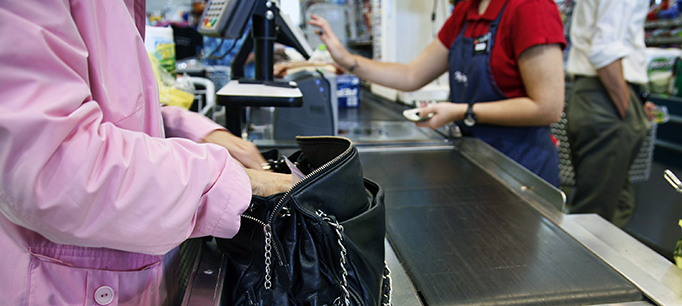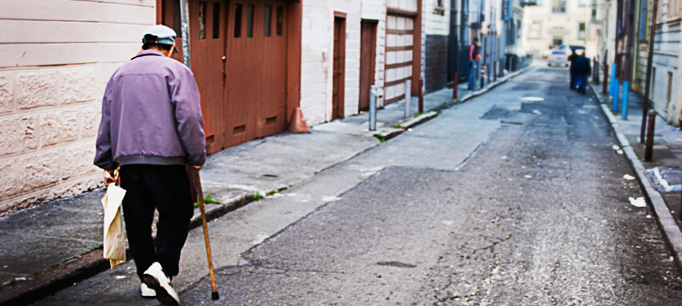The Assembly Human Services Committee held a hearing on Tuesday, July 14, to consider a joint resolution regarding official poverty measurement tools. PPIC research fellow Sarah Bohn provided background on official poverty statistics and explained how different measurement tools affect our understanding of poverty in California. Here are her prepared remarks.
My name is Sarah Bohn, I am a research fellow at the Public Policy Institute of California. PPIC is a nonpartisan, independent research institute and as such does not take positions on bills before the legislature. I am here today to inform the committee on facts related to Assembly Joint Resolution 22 (AJR 22). As some of you know, PPIC, in collaboration with the Stanford Center on Poverty and Inequality, has been deeply involved in research on alternative poverty measurement for the past three years. I will provide background on the shortcomings of official poverty statistics and offer an updated view of poverty measurement—and poverty in California.
According to official statistics, poverty is significantly higher (50% higher) than it was 50 years ago, when the War on Poverty began. As we shall see, this finding should be taken with a big grain of salt. Poverty status, as you know, is based on how family income compares to the “federal poverty line.” This was developed in the early 1960s as the first working definition of poverty in the U.S. It is based on family budgets of that time, when a typical family spent one-third of its income on food. So the threshold was (to simplify a bit) three times the cost of food a family would need to meet basic needs. While this was a novel use of the facts and information available then and was hugely important in creating a standard metric to inform policy, it’s hard to apply the same metric to modern families and derive a clear understanding of how families—and policy—are doing. There are two main reasons for this: (1) the cost of living and family budgets have shifted considerably, with families spending more on housing, work expenses (like commuting and child care), and medical care and less on food overall (2) several government programs have changed and expanded, but are not counted in family income data in the official poverty measure. For these reasons, official poverty statistics are hard to interpret; they essentially compare a part of family resources to an outdated benchmark.
Two current measures—the Census Bureau’s “Supplemental Poverty Measure” and the PPIC-Stanford “California Poverty Measure” (which uses a similar methodology)—update and realign the basic poverty concept that is now more than 50 years old. There is quite a lot of momentum and agreement around the benefits of these “supplemental” measures. In summary, the methodology aims to improve on official poverty measurement in the following ways. First, both measures use detailed data on what families actually spend to meet basic needs, rather than relying on a 1960s-era approximation. Second, these metrics allow for the cost of living to vary (conservatively), depending on where one lives. Third, they make use of a comprehensive estimate of resources families have on hand, which includes cash income, program benefits, taxes paid or credited, net of medical and work expenses.
The Supplemental and California Poverty Measures provide new insights to poverty. I’ll highlight a couple that are especially related to the impact of policy. First, I’ll return to the effects of the War on Poverty. Using supplemental measures, researchers find a clear downward trend in poverty—specifically, that government programs reduced poverty by 15 percentage points since the mid-1960s. These are facts that cannot be uncovered by official poverty data, which, you may recall, suggests that poverty rates rose 50 percent despite policy efforts. Second, poverty in California today would be much higher were it not for the safety net. Without major programs like CalWORKs, CalFresh, the federal Earned Income Tax Credit, and housing subsidies (among others) nearly 40 percent of children in California would be poor—or 30 percent of state residents overall.
It’s possible that the safety net in California could have an even longer reach than it already does. For one, increasing program participation among eligible families could reduce poverty. Also, because many poverty programs are not scaled to cost of living, their ability to materially affect families in poverty varies substantially across the state. In high-cost areas, safety net benefits reduce poverty by about 30 percent, but they reduce it by 50 percent in the Central Valley and far north. Poor families in coastal (and the most populous) parts of the state face costs $7,000 to $12,000 higher than the federal poverty line accounts for. Although we find that poor families in high cost areas are more likely to be working—and earning more—than their counterparts elsewhere, their earnings are not enough to boost them above the more realistic cost-adjusted supplemental poverty threshold. But their slightly higher earnings (which are still low by California standards) make them less likely to qualify for some safety net programs.
These examples scratch the surface of what is possible using the tools of improved measures like the Supplemental and California Poverty Measure. We also hope to use our research to assess how proposed changes to programs could move families out of poverty. But beyond these efforts, I would argue that simply tracking poverty in and across California and the U.S.—using truly comprehensive and accurate metrics—should be a regular contribution to the policymaking process. For those of us at PPIC and for other researchers involved in poverty research across the country, including those at the Census Bureau, alternative measures of poverty are still in their early phases, and, as such, rely on policymaker awareness and on funding to continue to produce. Thank you for your interest in the topic and your time today.




 Both the California Poverty Measure and Census’s Supplemental Measure account for the resources that families
Both the California Poverty Measure and Census’s Supplemental Measure account for the resources that families  The California Poverty Measure allows us to look closely at the role safety net programs play in mitigating poverty. And our research suggests that this role is powerful—especially for children. We find that without CalWORKs benefits the child poverty rate jumps 2.5 points—equivalent to about a quarter million more children in poverty. Similarly, without CalFresh benefits, the child poverty rate would jump 4 points—that is an additional 375,000 children. Of course, many families use both of these programs, as well as others that we’ve accounted for—including housing subsidies, SSI, school meals, and the EITC/CTC. When we look at the combined effect of all of these need-based safety net programs, we find that without them a stunningly high 39 percent—or 3.6 million—of California’s children would be poor. That is, the child poverty rate would jump nearly 14 points. This shows that low-income and poor families are making use of the social safety net and that it has a substantial effect on their poverty status.
The California Poverty Measure allows us to look closely at the role safety net programs play in mitigating poverty. And our research suggests that this role is powerful—especially for children. We find that without CalWORKs benefits the child poverty rate jumps 2.5 points—equivalent to about a quarter million more children in poverty. Similarly, without CalFresh benefits, the child poverty rate would jump 4 points—that is an additional 375,000 children. Of course, many families use both of these programs, as well as others that we’ve accounted for—including housing subsidies, SSI, school meals, and the EITC/CTC. When we look at the combined effect of all of these need-based safety net programs, we find that without them a stunningly high 39 percent—or 3.6 million—of California’s children would be poor. That is, the child poverty rate would jump nearly 14 points. This shows that low-income and poor families are making use of the social safety net and that it has a substantial effect on their poverty status. These poverty-reducing effects could be even larger if changes were made to the safety net. For example, the USDA estimates that slightly more than half of eligible Californians participate in CalFresh—this is one of the lowest statewide participation rates in the nation. Participation also varies across California’s counties. This begs the question of how much lower poverty rates would be—would they still be the highest in the country?—if participation rates were higher. As this example shows, housing costs are not the only area in which California stands out. And, while policy clearly plays an important role in offsetting the higher cost of living in California (it more than offsets cost of living in families with children), it has the potential to move the needle on poverty even further.
These poverty-reducing effects could be even larger if changes were made to the safety net. For example, the USDA estimates that slightly more than half of eligible Californians participate in CalFresh—this is one of the lowest statewide participation rates in the nation. Participation also varies across California’s counties. This begs the question of how much lower poverty rates would be—would they still be the highest in the country?—if participation rates were higher. As this example shows, housing costs are not the only area in which California stands out. And, while policy clearly plays an important role in offsetting the higher cost of living in California (it more than offsets cost of living in families with children), it has the potential to move the needle on poverty even further.